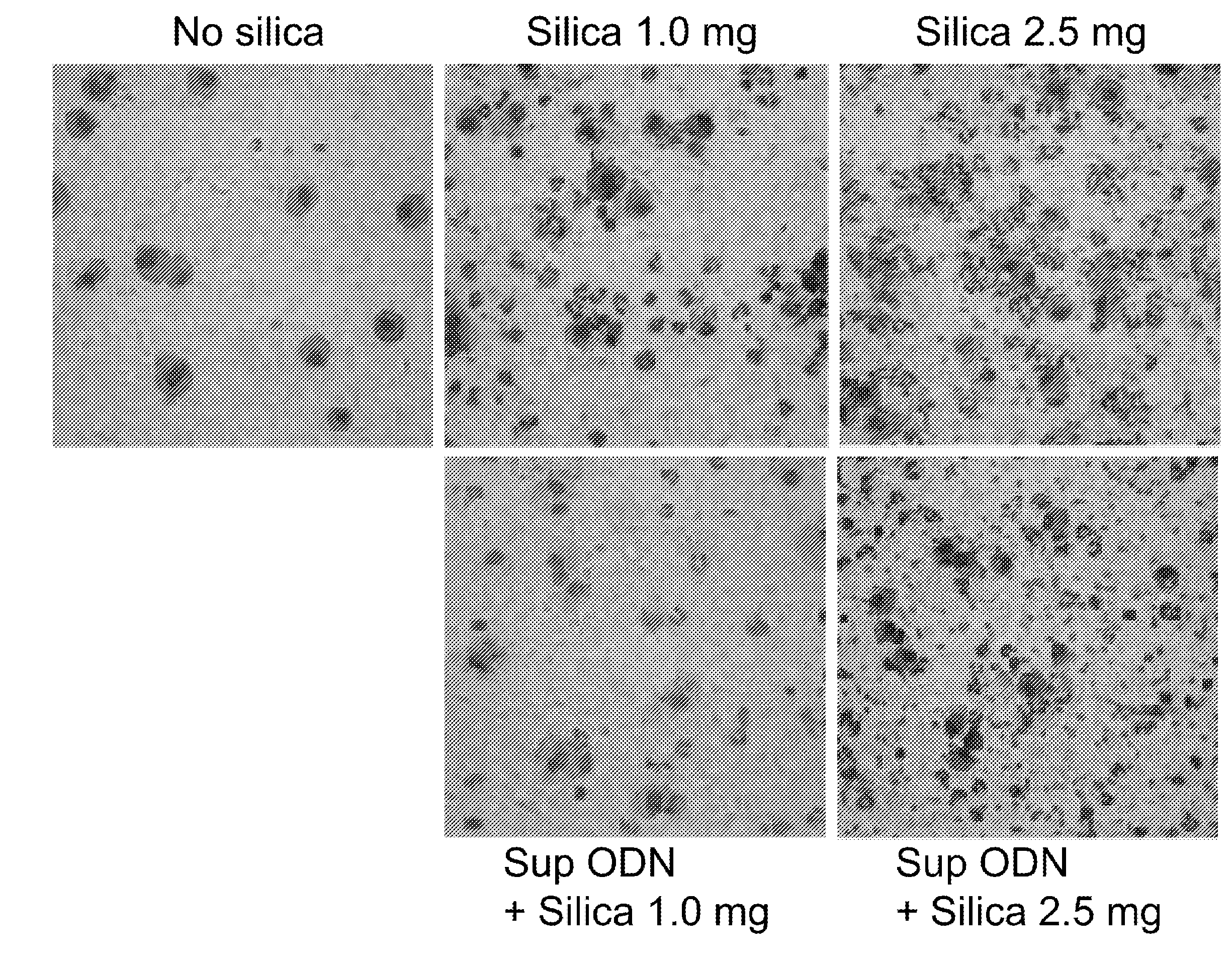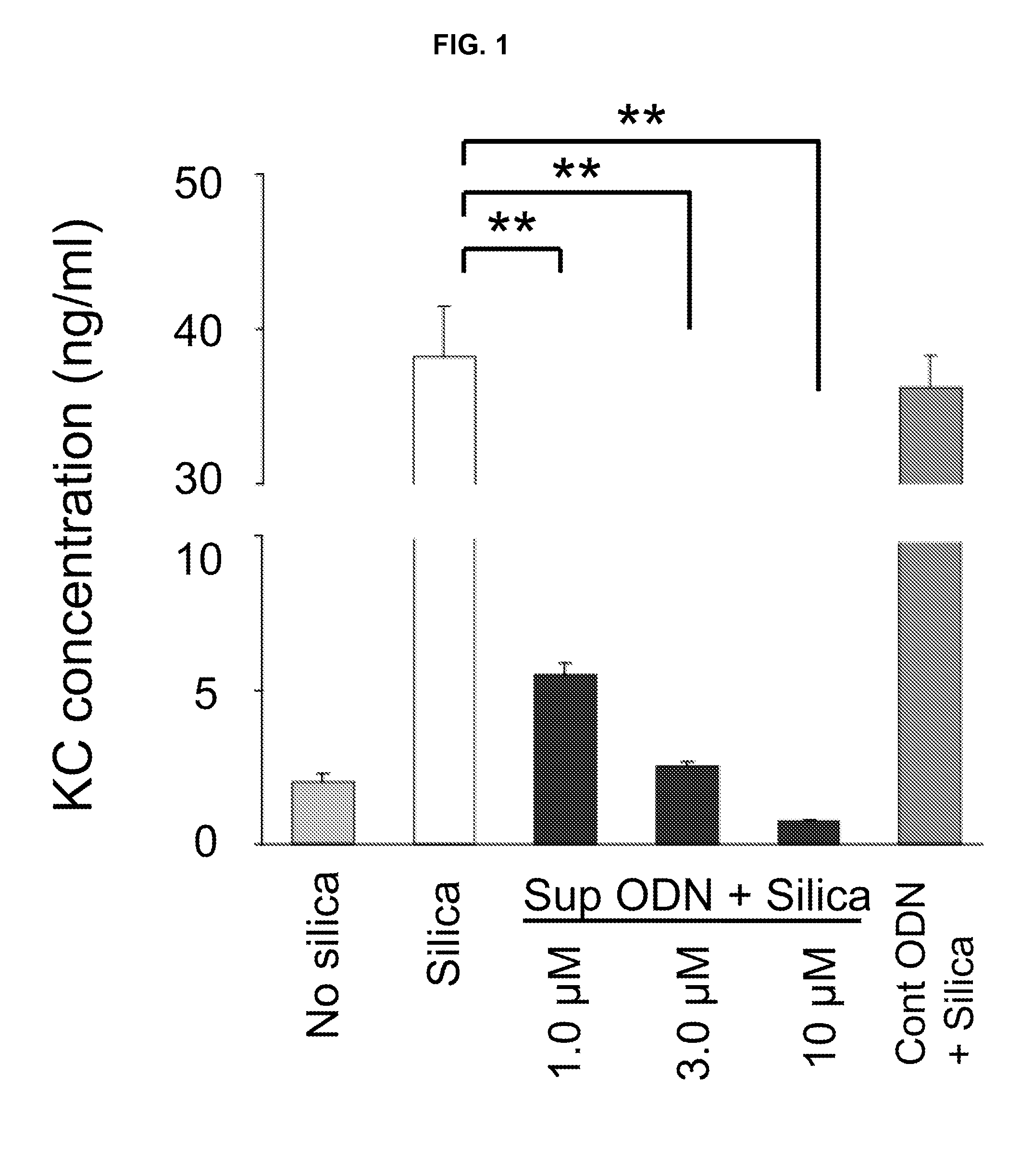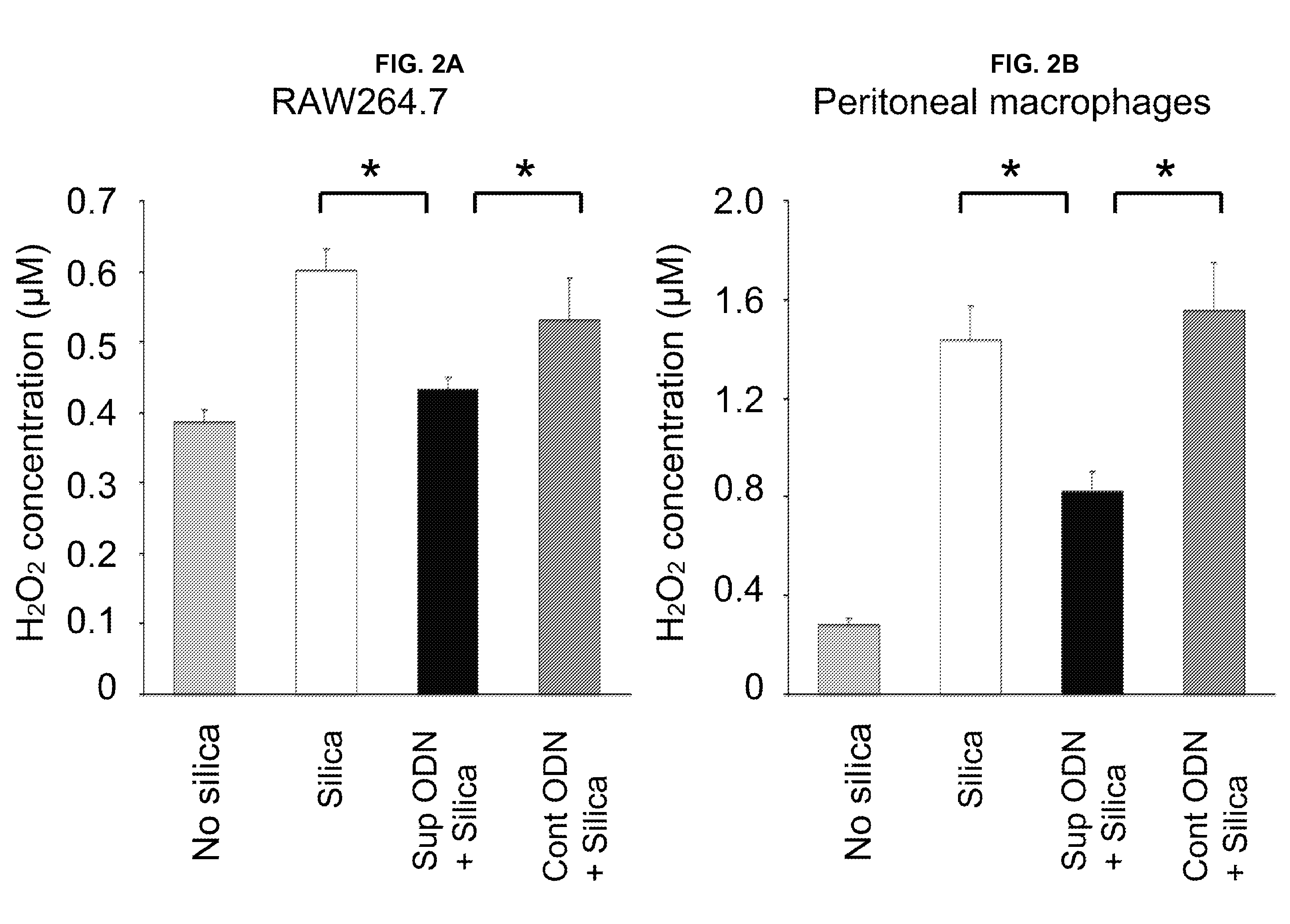Method of treating pneumoconiosis with oligodeoxynucleotides
- Summary
- Abstract
- Description
- Claims
- Application Information
AI Technical Summary
Benefits of technology
Problems solved by technology
Method used
Image
Examples
example 1
Materials and Methods
[0143]Oligodeoxynucleotides and Reagents: Phosphorothioate oligodeoxynucletoides (ODNs) were synthesized at the Center for Biologics Evaluation and Research core facility (Bethesda, Md.). The following exemplary ODNs were used in the studies described below: suppressive ODN; TTAGGGTTAGGGTTAGGGTTAGGG (SEQ ID NO: 2), control ODN; TTCAAATTCAAATTCAAATTCAAA (SEQ ID NO: 26). ODN contained Am. J. Respir. Cell Mol. Biol. 24:368-375, 2001).
[0144]In vitro studies: The mouse macrophage-like cell line RAW264.7 and the murine bronchial cell line MM14.Lu were purchased from American Type Cell Culture (Manassas, Va.) and maintained in RPMI 1640 medium supplemented with 10% FCS, 100 U / ml penicillin, 100 g / ml streptomycin, 25 mM HEPES, 1.0 mM sodium pyruvate, nonessential amino acids and 0.0035% 2-mercaptoethanol. Peritoneal cells were isolated from mice injected i.p. with 3% thioglycolate, as previously described (Shirota et al., J. Immunol. 174:4579-4583, 2005). Single cells s...
example 2
[0152]Suppressive ODN Reduce the Inflammatory Response of MM14.Lu Lung Cells Cultured with Silica
[0153]The murine MM14.Lu cell line provides a in vitro model for studying the effect of silica exposure on pulmonary cells. MM14.Lu cells incubated with 40 μg / cm2 of silica respond by producing the pro-inflammatory chemokine KC (FIG. 1). The inclusion of suppressive ODN during culture abrogated this silica-induced KC production in a dose-dependent manner (p<0.01), whereas control ODN had no effect (FIG. 1). Of note, a similar down-regulation in IL-6 production by silica-stimulated MM14.Lu cells treated with suppressive ODN was also observed.
example 3
Suppressive ODN Reduce the Production of Reactive Oxygen Species (ROS) and Improve the Viability of Macrophages Cultured with Silica
[0154]Macrophages contribute to the lung pathology induced by silica inhalation (3). Macrophages exposed to silica produce ROS (including H2O2) via a p47phox dependent pathway (Rimal et al., Curr. Opin. Pulm. Med. 11:169-173, 2005; Sayeset al., Toxicol. Sci. 97:163-180, 2007; Persson, Toxicol. Lett. 159:124-133, 2005; Giorgio et al., Nat. Rev. Mol. Cell Biol. 8:722-728, 2007; Bedard and Krause., Physiol Rev. 87:245-313, 2007; Teissier et al., Circ. Res. 95:1174-1182, 2004; Von and Brune, J. Immunol. 169:2619-2626, 2002; Gercken et al., Toxicol. Lett. 88:121-129, 1996; Shen et al., Am. J. Physiol Lung Cell Mol. Physiol 280:L10-L17-L17, 2001; Becher et al., Inhal. Toxicol. 19:645-655, 2007). Consistent with those findings, peritoneal macrophages and the RAW264.7 macrophage cell line exposed to silica particles in vitro responded by up-regulating p47phox e...
PUM
| Property | Measurement | Unit |
|---|---|---|
| Length | aaaaa | aaaaa |
Abstract
Description
Claims
Application Information
 Login to View More
Login to View More - R&D
- Intellectual Property
- Life Sciences
- Materials
- Tech Scout
- Unparalleled Data Quality
- Higher Quality Content
- 60% Fewer Hallucinations
Browse by: Latest US Patents, China's latest patents, Technical Efficacy Thesaurus, Application Domain, Technology Topic, Popular Technical Reports.
© 2025 PatSnap. All rights reserved.Legal|Privacy policy|Modern Slavery Act Transparency Statement|Sitemap|About US| Contact US: help@patsnap.com



